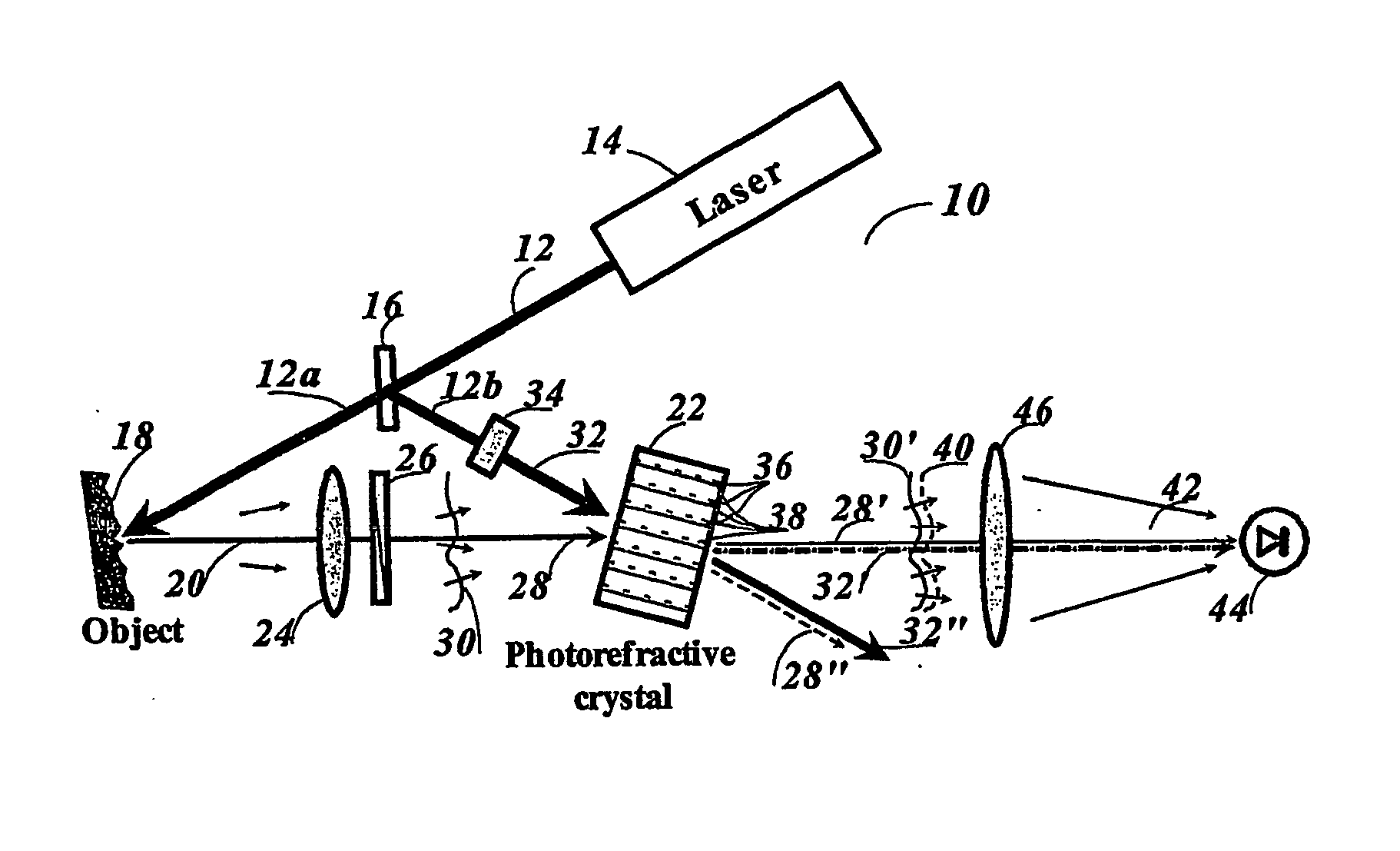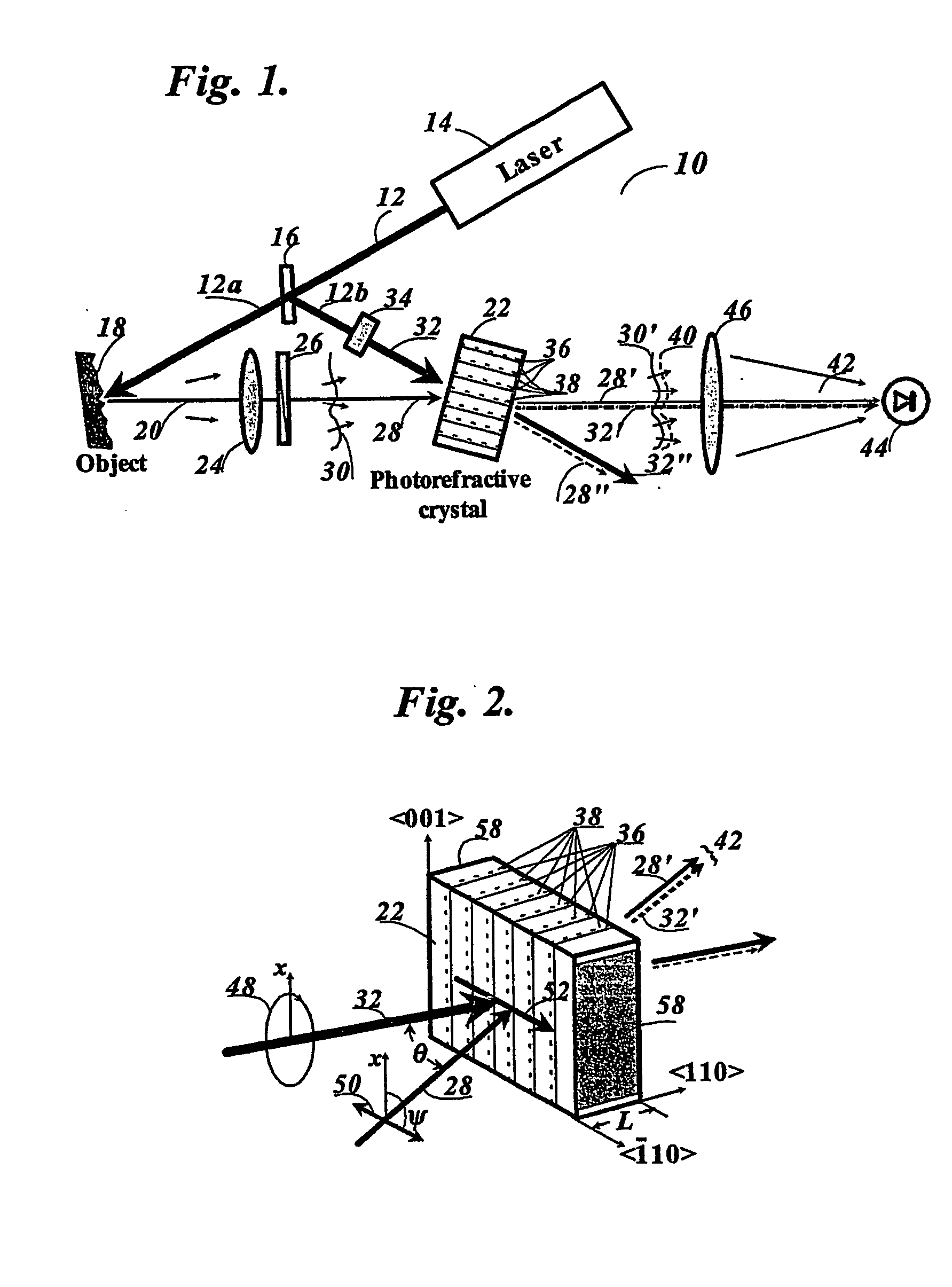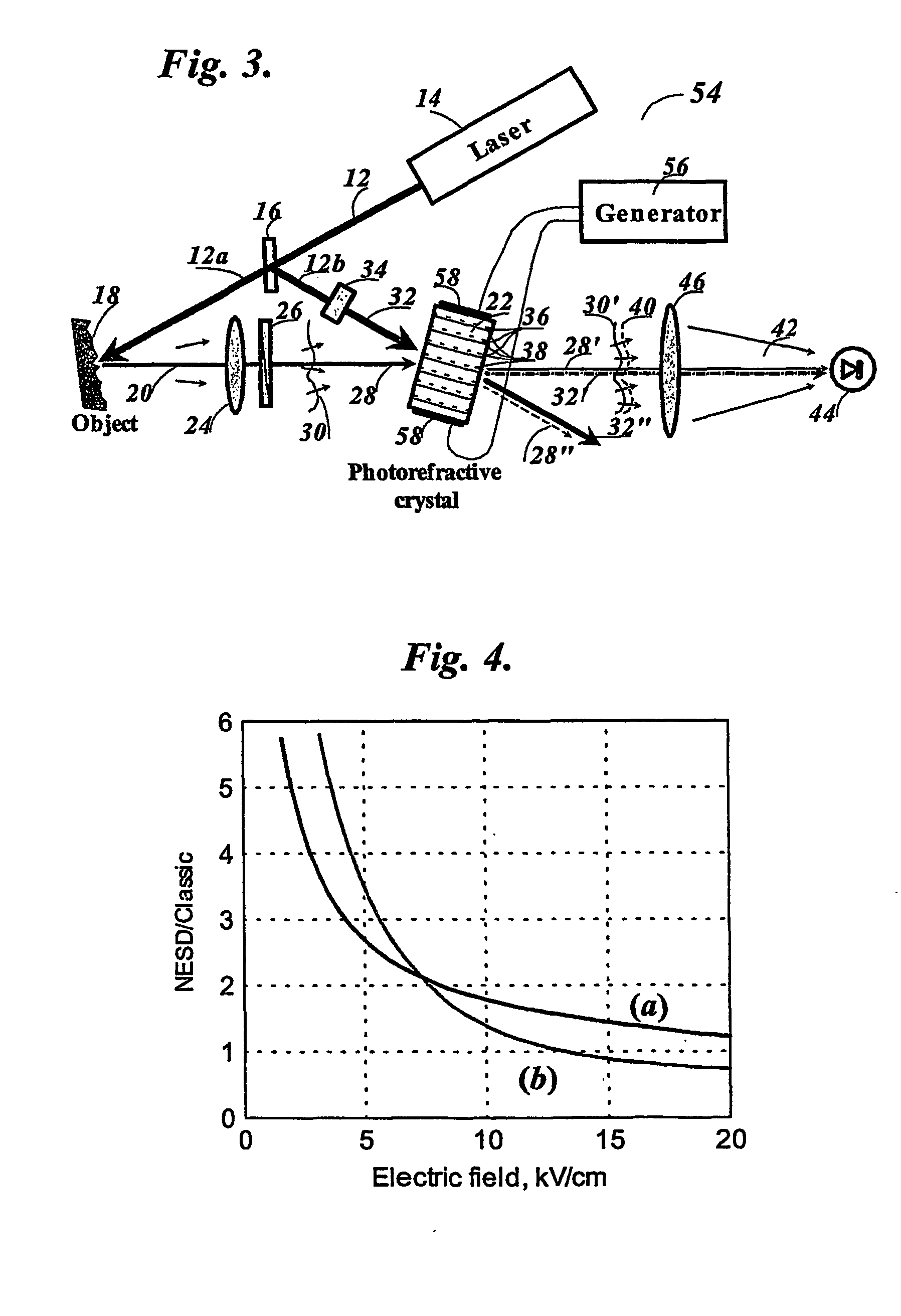Detection of transient phase shifts in any optical wave front with photorefractive crystal and polarized beams
- Summary
- Abstract
- Description
- Claims
- Application Information
AI Technical Summary
Benefits of technology
Problems solved by technology
Method used
Image
Examples
example
[0071] The photorefractive crystal 22 of Bi12TiO20 was cut in the parallelepiped shape similar to that shown in FIG. 2. The input face polished to the optical quality is orthogonal to the crystallographic axis . The thickness, L, of the crystal is equal to 1.97 mm. Gold electrodes were evaporated onto the faces that are orthogonal to the crystallographic axis . The distance between electrodes is equal to 1.95 mm. The third dimension of the crystal (along to the axis ) is equal to 5.48 mm.
[0072] Further characterization of the photorefractive crystal 22 was carried out in the interferometer setup similar to that shown in FIG. 3, embodiment 54. In this characterization, a rough vibrating surface of a loudspeaker diffuser served as a surface under study 18. The loudspeaker was connected with a standard signal generator for excitation of diffuser vibrations at the frequency range 20 Hz-2 kHz. A high-voltage generator 56 electrically connected with the electrodes 58 of the photorefracti...
PUM
 Login to View More
Login to View More Abstract
Description
Claims
Application Information
 Login to View More
Login to View More - R&D Engineer
- R&D Manager
- IP Professional
- Industry Leading Data Capabilities
- Powerful AI technology
- Patent DNA Extraction
Browse by: Latest US Patents, China's latest patents, Technical Efficacy Thesaurus, Application Domain, Technology Topic, Popular Technical Reports.
© 2024 PatSnap. All rights reserved.Legal|Privacy policy|Modern Slavery Act Transparency Statement|Sitemap|About US| Contact US: help@patsnap.com










